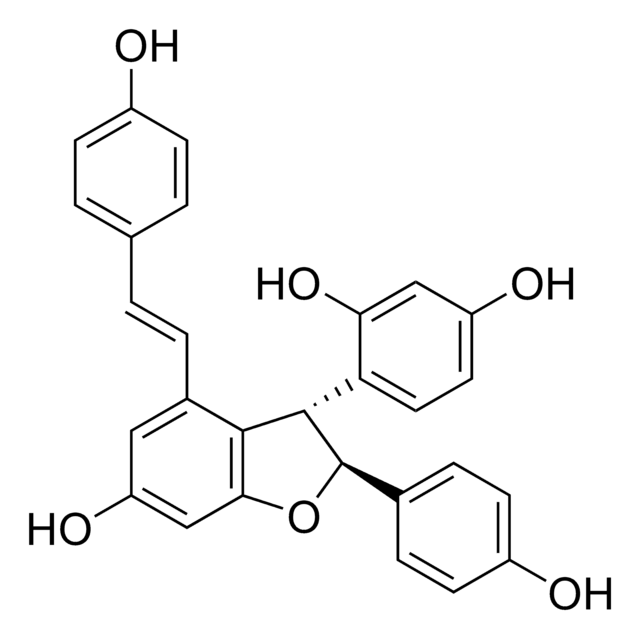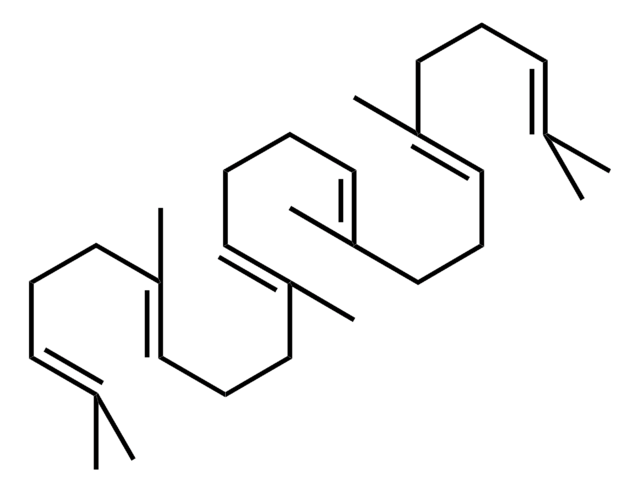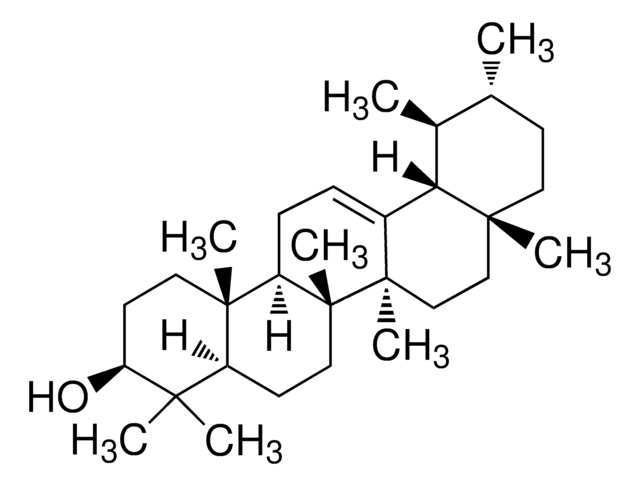41719
(3S)-2,3-Oxidosqualene
≥97.5% (HPLC)
別名:
(S)-2,3-Epoxy-2,3-dihydrosqualene, (S)-22,23-Epoxy-2,6,10,15,19,23-hexamethyl-2,6,10,14,18-tetracosapentaene, (S)-Squalene 2,3-epoxide, (S)-Squalene 2,3-oxide
About This Item
おすすめの製品
アッセイ
≥97.5% (HPLC)
形状
liquid
光学純度
enantiomeric excess: ≥90.0%
適合性
conforms to structure for Proton NMR spectrum
保管温度
−20°C
SMILES記法
CC1(C)O[C@H]1CC/C(C)=C/CC/C(C)=C/CC/C=C(C)/CC/C=C(C)/CCC=C(C)C
InChI
1S/C30H50O/c1-24(2)14-11-17-27(5)20-12-18-25(3)15-9-10-16-26(4)19-13-21-28(6)22-23-29-30(7,8)31-29/h14-16,20-21,29H,9-13,17-19,22-23H2,1-8H3/b25-15+,26-16+,27-20+,28-21+/t29-/m0/s1
InChI Key
QYIMSPSDBYKPPY-RSKUXYSASA-N
アプリケーション
- Schizophrenic behavior of 2,3-Oxidosqualene Sterol Cyclase from pig liver towards 2,3-oxidosqualene analogues. Alain Krief and colleagues discuss the variable catalytic behaviors of oxidosqualene cyclase when interacting with different oxidosqualene analogues, suggesting implications for sterol production efficiency and specificity (Krief et al., 2021).
生物化学的/生理学的作用
保管分類コード
10 - Combustible liquids
WGK
WGK 3
引火点(°F)
Not applicable
引火点(℃)
Not applicable
適用法令
試験研究用途を考慮した関連法令を主に挙げております。化学物質以外については、一部の情報のみ提供しています。 製品を安全かつ合法的に使用することは、使用者の義務です。最新情報により修正される場合があります。WEBの反映には時間を要することがあるため、適宜SDSをご参照ください。
Jan Code
41719-50MG:
41719-25MG:
41719-BULK:
41719-1MG:
41719-VAR:
41719-10MG:
41719-5MG:
試験成績書(COA)
製品のロット番号・バッチ番号を入力して、試験成績書(COA) を検索できます。ロット番号・バッチ番号は、製品ラベルに「Lot」または「Batch」に続いて記載されています。
この製品を見ている人はこちらもチェック
ライフサイエンス、有機合成、材料科学、クロマトグラフィー、分析など、あらゆる分野の研究に経験のあるメンバーがおります。.
製品に関するお問い合わせはこちら(テクニカルサービス)









